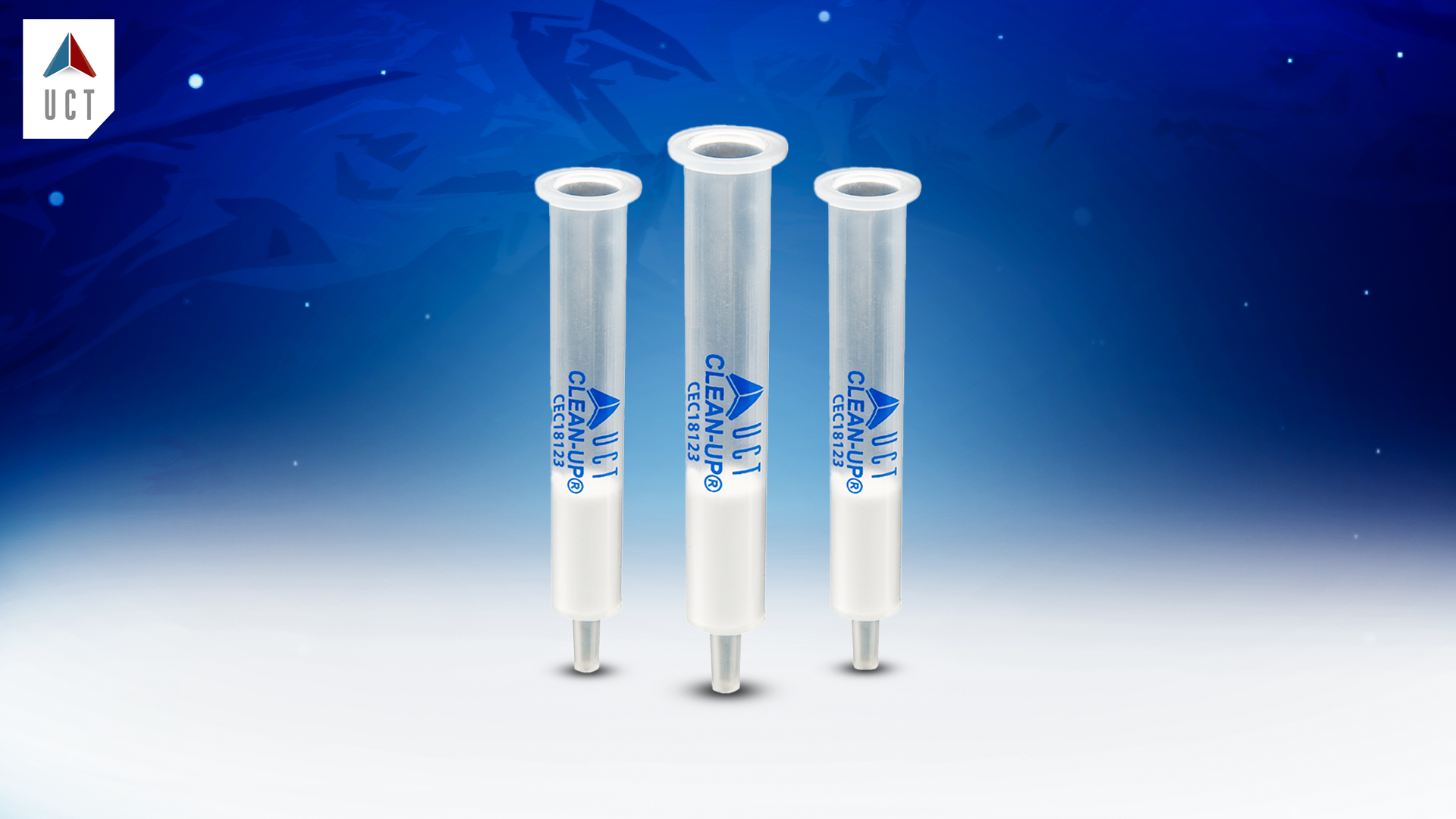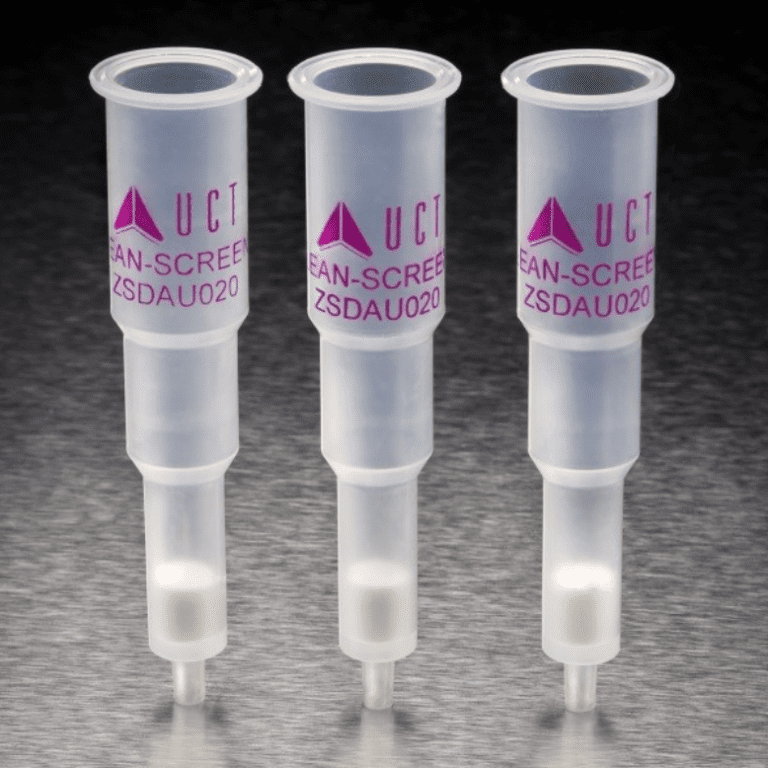UCT’s SPE Column Used in Extensive Equine Ketoprofen Pharmacology Study
Ketoprofen is a non-steroidal anti-inflammatory drug (NSAID) used to treat musculoskeletal inflammation and pain in horses. In the United States, the use of ketoprofen in racing horses is controlled by the Horseracing Integrity and Safety Authority (HISA). Under this newly established federal organization ketoprofen has screening limits of 2 ng/mL in blood and 100 ng/mL in urine. Additionally, a restricted administration time (RAT) of 48 hours has been enacted. The purpose of this study was to perform a comprehensive pharmacology study on ketoprofen using new and more sensitive analytical instruments to provide data on appropriate withdrawal times.
As part of this study, UCT’s Clean-Up® C18 solid phase extraction column was used to extract dihydro ketoprofen and ketoprofen glucuronide from serum and urine. Extraction procedures for each are below.
Serum Extraction Procedure
Sample prep: 0.5 mL sample + 2 mL 0.1 M pH 6 phosphate buffer + 0.1 mL of water containing internal standard and vortex
Condition: 2.5 mL MeOH, 3 mL water
Load: minimum of 2 minutes was allowed for samples to pass through the column
Wash: 3 mL water
Elute: 3 ml ACN
Urine Extraction Procedure
Sample prep: 0.5 mL sample + 2 mL 0.5% HCl in water+ 0.1 mL of water containing internal standard and vortex
Condition: 2.5 mL MeOH, 3 mL water
Load: minimum of 2 minutes was allowed for samples to pass through the column
Wash: 3 mL 10% methanol in water
Elute: 3 ml ACN
After instrument analysis, serum concentrations were used to calculate pharmacokinetic parameters, and urine concentrations were used to determine the time of detection after administration.
Using screening limits set by HISA, this study finds that a RAT of 48 hours is consistent with a single dose of 2.2 mg/kg IV of ketoprofen. However, a prolonged decrease from baseline in inflammatory biomarker (PGE2 and PGF2alpha) concentrations in an ex vivo model suggests that the pharmacological effects of ketoprofen may extend past 48 hours. This evidence indicates that a longer withdrawal time may be needed.
Citation: Knych, H. K., McKemie, D. S., Kass, P. H., Stanley, S. D., & Blea, J. (2023). Ketoprofen in horses: Metabolism, pharmacokinetics, and effects on inflammatory biomarkers. Drug testing and analysis, 10.1002/dta.3543. Advance online publication. https://doi.org/10.1002/dta.3543






